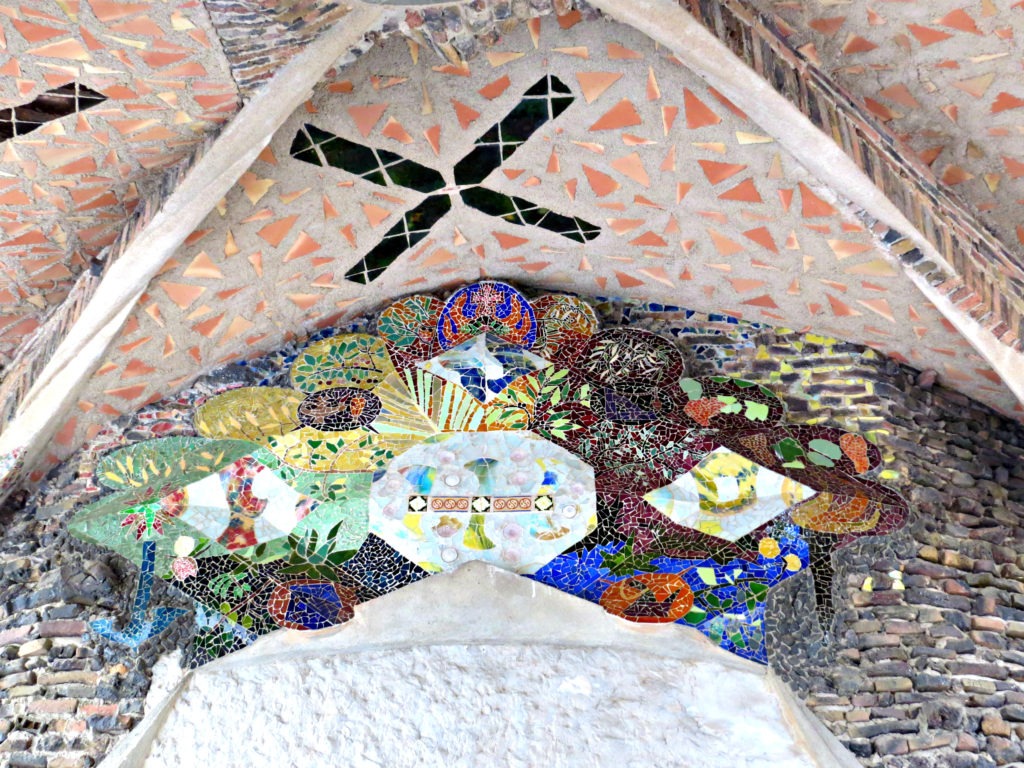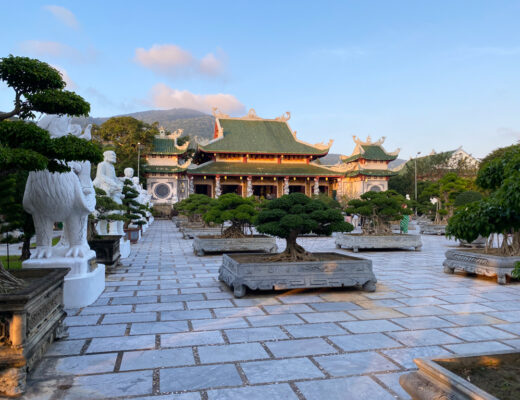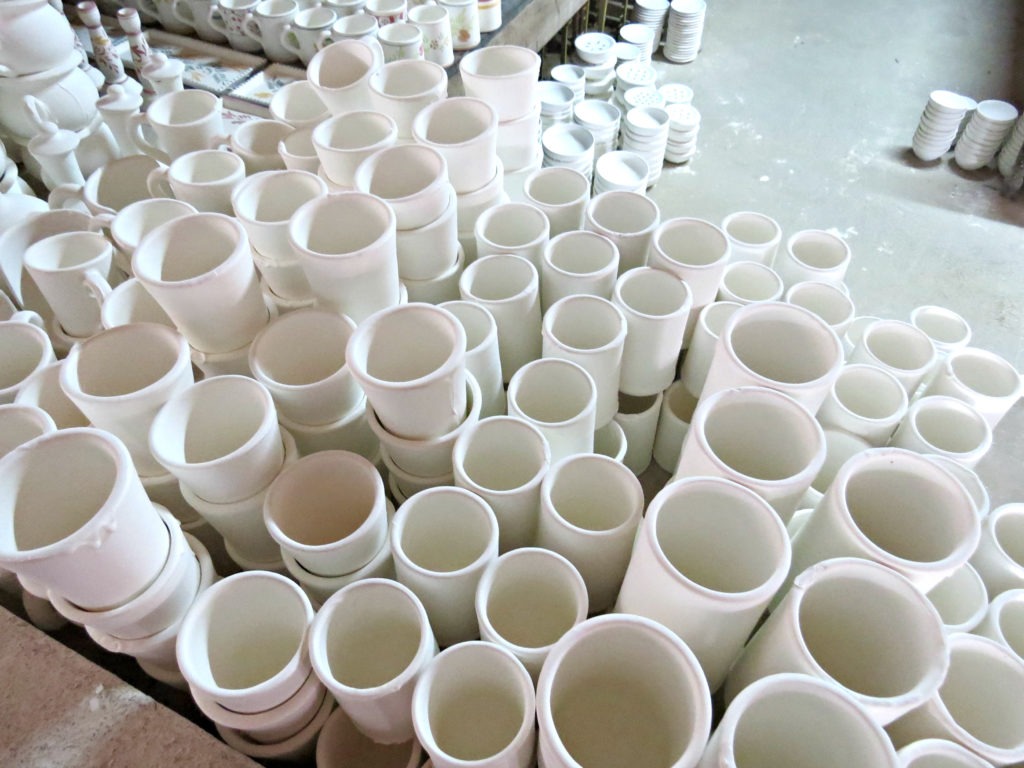This four part blog post series documents my second trip to Catalunya in August and September of 2016. This is the trip I started to really discover what the region is all about, or rather how it ebbs and flows. Read Part I here.
What do you think of when you think of Barcelona? Tapas? Paella? Party time? Football? Well, even though some of these stereotypes are terribly misguided, there is probably one thing that deserves to be connected to the city and the region of Catalunya. That connection is Antoni Gaudí. How could anyone not fall in love with his colourful mosaics and whimsical designs? So of course, coming back to Barcelona at the end of August, Victor and I visited a couple more masterpieces by Gaudí.
Colònia Güell
Victor and I planned an excellent adventure outside central Barcelona, all in the name of covering as much ground as possible. We knew we wanted to head to Montserrat, but we decided to take full advantage of being outside the city by also going to Colònia Güell. It is in Santa Coloma de Cervelló, 23 km southwest of Barcelona.
It is slightly difficult to explain what exactly Colònia Güell is, but I shall attempt describing it anyway. Colònia Güell translates to Güell colony and is a complex of buildings for factory workers. It is essentially an industrial village designed by many different artists including the famous Antoni Gaudí.
 The idea was to create a world which improved workers’ quality of life complete with terraced houses, an athenaeum, theatre, school, shops, gardens and a church.
The idea was to create a world which improved workers’ quality of life complete with terraced houses, an athenaeum, theatre, school, shops, gardens and a church.

 The Güell family hired Gaudí to design the church. In 1914, the Güell family withdrew funding for the unfinished project. The church, now known as the crypt, includes many of Gaudí’s architectural innovations for the first time. This includes catenary arches, outer walls and vaults in the shape of hyperbolic parabolas, decorative broken mosaic tiling, known as “trencadís”, and the integration of materials into their natural surroundings. Even unfinished, the church is a beautiful spectacle to behold.
The Güell family hired Gaudí to design the church. In 1914, the Güell family withdrew funding for the unfinished project. The church, now known as the crypt, includes many of Gaudí’s architectural innovations for the first time. This includes catenary arches, outer walls and vaults in the shape of hyperbolic parabolas, decorative broken mosaic tiling, known as “trencadís”, and the integration of materials into their natural surroundings. Even unfinished, the church is a beautiful spectacle to behold.

 Most tourists don’t make it as far as Colònia Güell, but it truly is a unique experience. And best of all, it is still relatively unknown and not overflowing with crowds!
Most tourists don’t make it as far as Colònia Güell, but it truly is a unique experience. And best of all, it is still relatively unknown and not overflowing with crowds!

Casa Milà
There are numerous mansions to tour in Barcelona. It seems to be one of the biggest tourist activities in the city, and one can quickly understand why. You get to have a look into a world like any other, and the aesthetic is beautiful! Even if you’re not so much into the history or the technical aspects of design, the houses are simply gorgeous. Last year I went to two such houses: Palau Güell and Casa Batlló. This year I visited Casa Milà, also known as La Pedrera.

 Antoni Gaudí’s last civil work is La Pedrera, built from 1906 to 1912. The house is at the corner of Passeig de Gràcia and Provence in downtown Barcelona.
Antoni Gaudí’s last civil work is La Pedrera, built from 1906 to 1912. The house is at the corner of Passeig de Gràcia and Provence in downtown Barcelona.
Gaudí designed the house as a constant curve, both outside and inside, incorporating ruled geometry and naturalistic elements.

 The rooftop is a magical playground. Interesting sculptures and miniature buildings line the rooftop. The small buildings disguise staircases down to the actual interior of the building. Called “the garden of warriors” by the poet Pere Gimferrer, the chimneys protect the skylights.
The rooftop is a magical playground. Interesting sculptures and miniature buildings line the rooftop. The small buildings disguise staircases down to the actual interior of the building. Called “the garden of warriors” by the poet Pere Gimferrer, the chimneys protect the skylights.



 The original owner of the house passed away and the new owners divided the first floor facing Carrer de Provença into five apartments instead of the original two.
The original owner of the house passed away and the new owners divided the first floor facing Carrer de Provença into five apartments instead of the original two.
In 1953 they commissioned Francisco Juan Barba Corsini to construct 13 apartments in the attic. The apartments are on the outer side of the space, leaving a communal hallway on the side that faces the courtyards. Apartments have two or three rooms, some with a loft. They are designed and furnished in a style typical of the early 1950s.


 The two main halls are fully polychrome with oil paintings on a plaster surface, showing an eclectic repertoire of references to mythology and flowers. These murals were absolutely beautiful, and really took my breath away. All the color and wonder completed the house, and so I was really happy to have taken the time to explore another aspect of Gaudí.
The two main halls are fully polychrome with oil paintings on a plaster surface, showing an eclectic repertoire of references to mythology and flowers. These murals were absolutely beautiful, and really took my breath away. All the color and wonder completed the house, and so I was really happy to have taken the time to explore another aspect of Gaudí.

For a natural kind of beauty, read on to discover the mountains of Montserrat.




No Comments